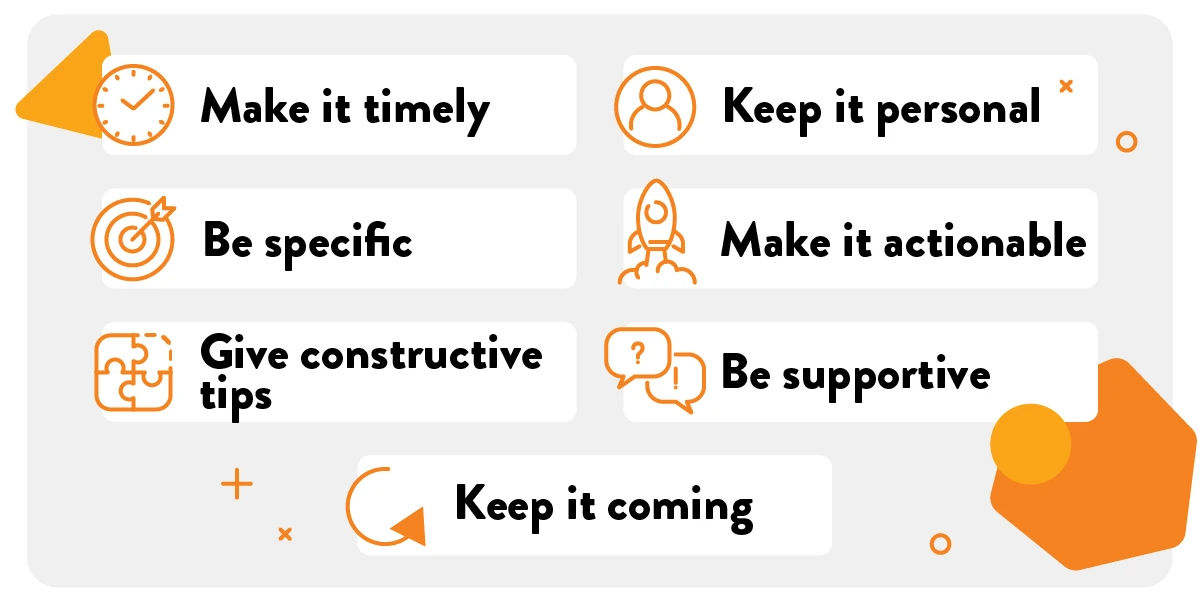7 Strategies for Giving Actionable Feedback to Empower Students

Good job! Nice work! Great answer! When students read those words after completing assignments, what do they learn? Maybe they assume they followed directions correctly. Perhaps they think their handwriting was legible, or they remembered to put their name on the paper–for a change! Maybe their test score was the best one so far.
The truth is that they don’t really know. That kind of feedback is too vague and leaves the student with nothing – no details that explain the grade or strategies to use for future assignments.
The disconnect between feedback and effective feedback for learning
Sure, it’s easy and quick to write a simple phrase noting the completion of work. That’s especially true when the assignment is done well. But all students need feedback they can use. The words need to be specific and actionable. What did the student do right? Where are some areas that require a closer look?
When students read feedback from teachers, they should understand what is necessary to keep learning and digging deeper within the context of the task. What can be added? What needs to be explained more fully? What steps can be taken to evaluate new outcomes? Use feedback for students to explain specifically what can be done to improve both understanding and grades.
When teachers are comfortable, it’s also a good idea to provide students with tips that are helpful outside of the content area, such as helping them with writing conventions. If science teachers notice that commas are never used in written responses, it’s helpful to point that out to the student.
When thinking about how to give effective feedback to your students, remember the whole student and not just the concepts.
Why does feedback matter to your students?
Why is feedback important for students? Think about the students who want to know how soon assignments will be graded at the same time they’re turning them in. When students perform tasks for school, they want confirmation that they’re on the right track. Maybe they’re proud of their efforts and hoping for some praise. Or maybe they aren’t sure if they fully understand the concept or directions and don’t know how to ask for help.
Effective feedback ensures that students know what they need to do to further their learning, including changes to the assignment or additional tasks for completion.

More than just words: Ways to give meaningful feedback for student growth
Regardless of the subject matter or grade level, all teachers wonder how to give meaningful feedback to students. When giving student feedback, keep these 7 tips in mind.
- Make it timely: If students receive ways to improve work several weeks after completing the assignment, that feedback won’t be impactful. The students have moved on, so the feedback won’t have the same effect as it would soon after the due date.
- Be specific: Students need explicit feedback to understand expectations and next steps. That doesn’t mean leading them to answers. It’s more about giving effective feedback for learning that leads them to the right questions.
- Give constructive tips: Consider the positives and negatives and clearly balance both. Offer distinct reasons for praise along with clear-cut suggestions for improvement.
- Keep it personal: Make sure to include individualized feedback. If you know a student struggled with an assignment, call out the effort it took to complete it. When students feel proud of their work, choose an example or two that also stood out to you.
- Make it actionable: Students want to know what to do. They’re not trying to do assignments the wrong way. Give them something to use!
- Be supportive: There will be moments when a reason for positive feedback is tough to find. Take the time to find it anyway. Make sure students know you see everything and encourage a growth mindset rather than immediate perfection.
- Keep it coming: Students aren’t just looking for feedback on completed assignments. They need feedback throughout the learning process. Teachers can’t give enough! Write it on paper, comment digitally, and have conversations.
The importance of giving feedback to students can’t be stressed enough. When students receive meaningful feedback, it does more than help them improve academically. It also builds trust and communication between students and teachers for a true team effort in the learning process.
Experience evidence-based edtech in your classroom
Evidence-based edtech resources, like ExploreLearning math and science solutions, help teachers deliver effective feedback for students because they include real-time progress monitoring. Teachers and students know exactly what’s happening during every step of the learning process.
Interested in experiencing the difference tools like this can make with your students? Take a free trial!
